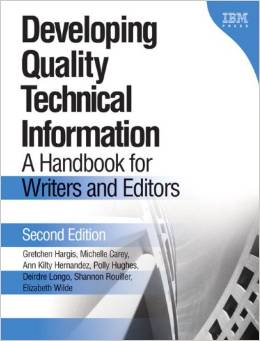by Michael O'Neill | Apr 3, 2016 | Agile, Quote
“I once asked Steve Jobs, often mistakenly considered a lone visionary and authoritarian leader, which of his creations made him most proud. I thought he might say the original Macintosh, or the iPhone. Instead he pointed out that these were all collaborative efforts. The creation he was most proud of, he said, were the teams he had produced…” –Walter Isaacson, preface to Team of Teams
by Michael O'Neill | Nov 13, 2014 | Quote, Scrum
In 1910, Teddy Roosevelt gave his famous “Citizenship in a Republic” speech at the Sorbonne. Many of us likely read it in high school, perhaps even had to memorize parts of it. I know I did, but shortly thereafter filed it away in a dusty recess of my mind, presumed to be forgotten. Fortunately, Jeff Sutherland resurfaced it in Scrum:
It is not the critic who counts; not the man who points out how the strong man stumbles, or where the doer of deeds could have done them better. The credit belongs to the man who is actually in the arena, whose face is marred by dust and sweat and blood; who strives valiantly; who errs, who comes short again and again, because there is no effort without error and shortcoming; but who does actually strive to do the deeds; who knows great enthusiasms, the great devotions; who spends himself in a worthy cause; who at the best knows in the end the triumph of high achievement, and who at the worst, if he fails, at least fails while daring greatly, so that his place shall never be with those cold and timid souls who neither know victory nor defeat. (source)
by Michael O'Neill | Nov 13, 2014 | Quote, Scrum
Jeff Sutherland writes in Scrum:
The thing that cripples communication saturation is specialization — the number of roles and titles in a group. If people have a special title, they tend to do only things that seem a match for that title. And to protect the power of that role, they tend to hold on to specific knowledge.
So we got rid of all titles. I called everyone and told them to rip up their business cards. If someone wanted to put a title on their resume, they could do it for external use only. In here, where the work was done, there were only team members. (emphasis added)
by Michael O'Neill | May 19, 2014 | Marketing
The marketing copy for the Oral-B Black is so bad, it needs to be scrubbed clean by a device more powerful than the toothbrush in question.
I’m not sure what agency is responsible for this, but marketing copy like this represents everything that is wrong with the world. It’s why marketers get a bad name, and it’s what happens when you don’t know how to write about benefits.
Take a gander at how they promote the “Six Brushing Modes” of the new Oral-B Black:
(more…)
by Michael O'Neill | May 14, 2014 | Quote, Writing
In Letting Go of the Words, Ginny Redish writes:
For successful conversations, you must develop design and content together. Waiting until the end and just pouring content intoa design that was created without real content is a recipe for disaster.
by Michael O'Neill | Mar 13, 2014 | Agile, Quote
In Agile Is Dead (Long Live Agility), Dave Thomas writes lucidly:
Back to the Basics
Here is how to do something in an agile fashion:
What to do:
- Find out where you are
- Take a small step towards your goal
- Adjust your understanding based on what you learned
- Repeat
How to do it:
When faced with two of more alternatives that deliver roughly the same value, take the path that makes future change easier.
And that’s it. Those four lines and one practice encompass everything there is to know about effective software development. Of course, this involves a fair amount of thinking, and the basic loop is nested fractally inside itself many times as you focus on everything from variable naming to long-term delivery, but anyone who comes up with something bigger or more complex is just trying to sell you something.
by Michael O'Neill | Mar 13, 2014 | Agile, Content Marketing
I started paying attention to Atlassian when I first used their Confluence wiki software. In its day, it was a brilliant tool. As a company, they’ve done a lot of things right: Their documentation was superb (thanks in no small part to fellow HP telecomm alum, Sarah Maddox). And their marketing was…well…inspired. Their company culture? Exceedingly open and inviting.
(more…)
by Michael O'Neill | Feb 5, 2014 | Content Marketing, Marketing, Quote
The four choices we have as content marketers, from Joe Pulizzi’s Epic Content Marketing:
You have four choices:
- You can inform and help your customers live better lives, find better jobs, or be more successful in the jobs they have now.
- You can choose to entertain and begin to build an emotional connection with your customers.
- You can choose to develop lackluster content that doesn’t move the needle.
- You can choose to spend money on traditional marketing, such as paid advertising, traditional direct mail, and public relations.
by Michael O'Neill | Feb 5, 2014 | Quote, SEO
From Shannon Stiller at Distilled:
It’s important to start measuring traffic and revenue/conversions by search referrals to URLs instead of just keywords (since those are quickly becoming dinosaurs) (source)



